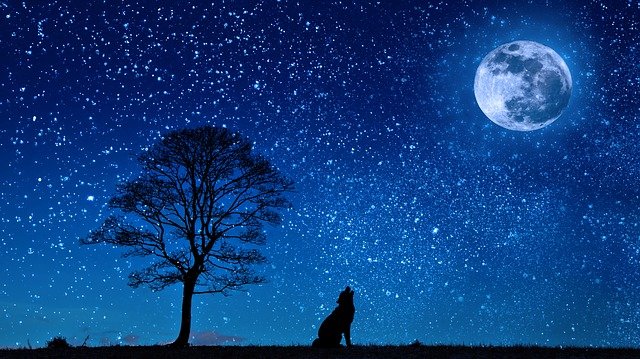
Lunation is the time elapsed between two equal phases of the Moon.
Lunation is a term that comes from the late Latin lunatio . The term refers to the time that occurs between two equal phases of the Moon .
Synodic lunar month
The lunar phases are linked to the illumination of the Sun. Each phase is associated with how the illuminated portion of the Moon changes according to its change in position with respect to our planet and the Sun.
Between two full Moons , for example, a lunation occurs. This period is equivalent to 29 days, 12 hours, 45 minutes and 3 seconds : it is usually abbreviated to 29.5 days (that is, twenty-nine and a half days).
Also known as the synodic lunar month , lunation is the basis of many ancient calendars. In fact, it can be said that lunation is the origin of the months we consider today.
To take into account
Although the twelve months we have today (January, February, March, April, May, June, July, August, September, October, November and December) are based on the synodic lunar months , they have no scientific correlate. This is because, as we mentioned above, lunations do not correspond exactly to an integer number of so-called solar days (given by the time it apparently takes for the Sun to make a complete revolution around planet Earth).
It should be noted that all the phases of the Moon make up the lunar cycle , which begins with the new Moon and ends with the waning Moon, passing through the waxing Moon, the First Quarter, the waxing gibbous Moon, the full Moon, the gibbous Moon. waning and the waning quarter. Lunation is the time that passes between two identical phases.
Moon phases
In summary, we speak of lunation to refer to a complete cycle of the Moon, which has nine well-defined phases if we want to describe it from the beginning to the end, although its number of main phases is four. It all begins with the aforementioned new Moon , which is also known as the Black Moon and is characterized by the impossibility of appreciating it from Earth unless it coincides with a total solar eclipse , since its illuminated side is the opposite of the one facing towards our planet.
The second phase is the crescent Moon , the first of the nine that we can see. It takes place two days after the previous one and can be seen throughout almost the entire day, and for a few hours at night. Its appearance is similar to that of a horn. It is followed by the crescent , four days later. The Sun illuminates half of its visible side, and can be observed during six hours of the day and another six at night. The fourth phase of the lunation is the waxing gibbous Moon , which exhibits a convex shape at both ends, leaving behind the relatively straight cut of the previous one.

The full Moon, surrounded by myths, exhibits a complete face
We reach the full Moon , when you can see a complete circle . It lasts twelve hours, from 6 p.m. to 6 a.m. This gives rise to the waning gibbous Moon , during which the illuminated face wanes day after day, until it acquires the same appearance as the fourth phase, but mirrored. The seventh phase, called the last quarter , is, for its part, the opposite of the first quarter , and can be observed throughout the early morning and morning, until noon.
The eighth phase is the waning Moon , which is also called the old Moon , and can only be seen in the early morning over the east, before sunrise. Finally, to complete the lunation, the black Moon arrives, to return to start the cycle .
